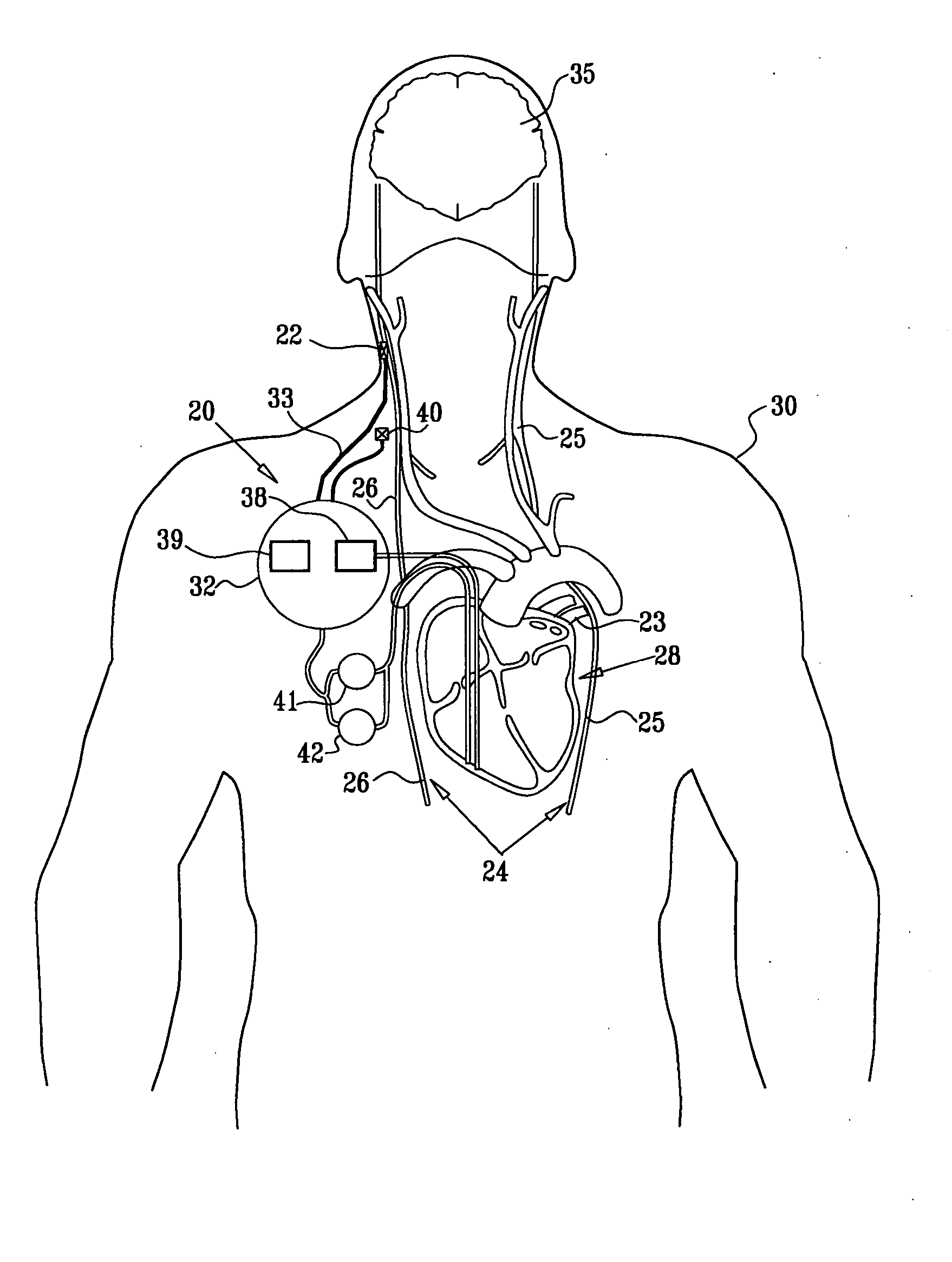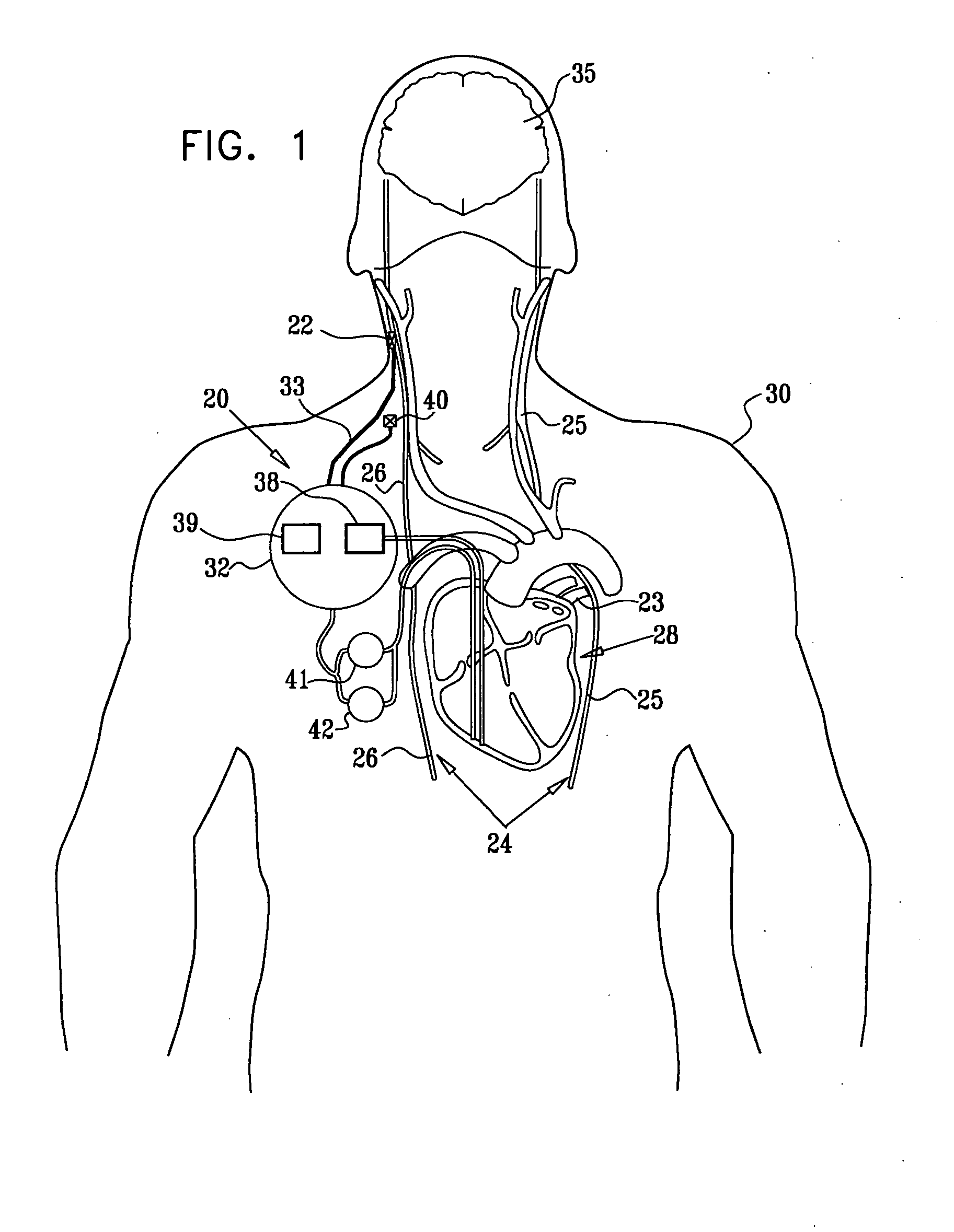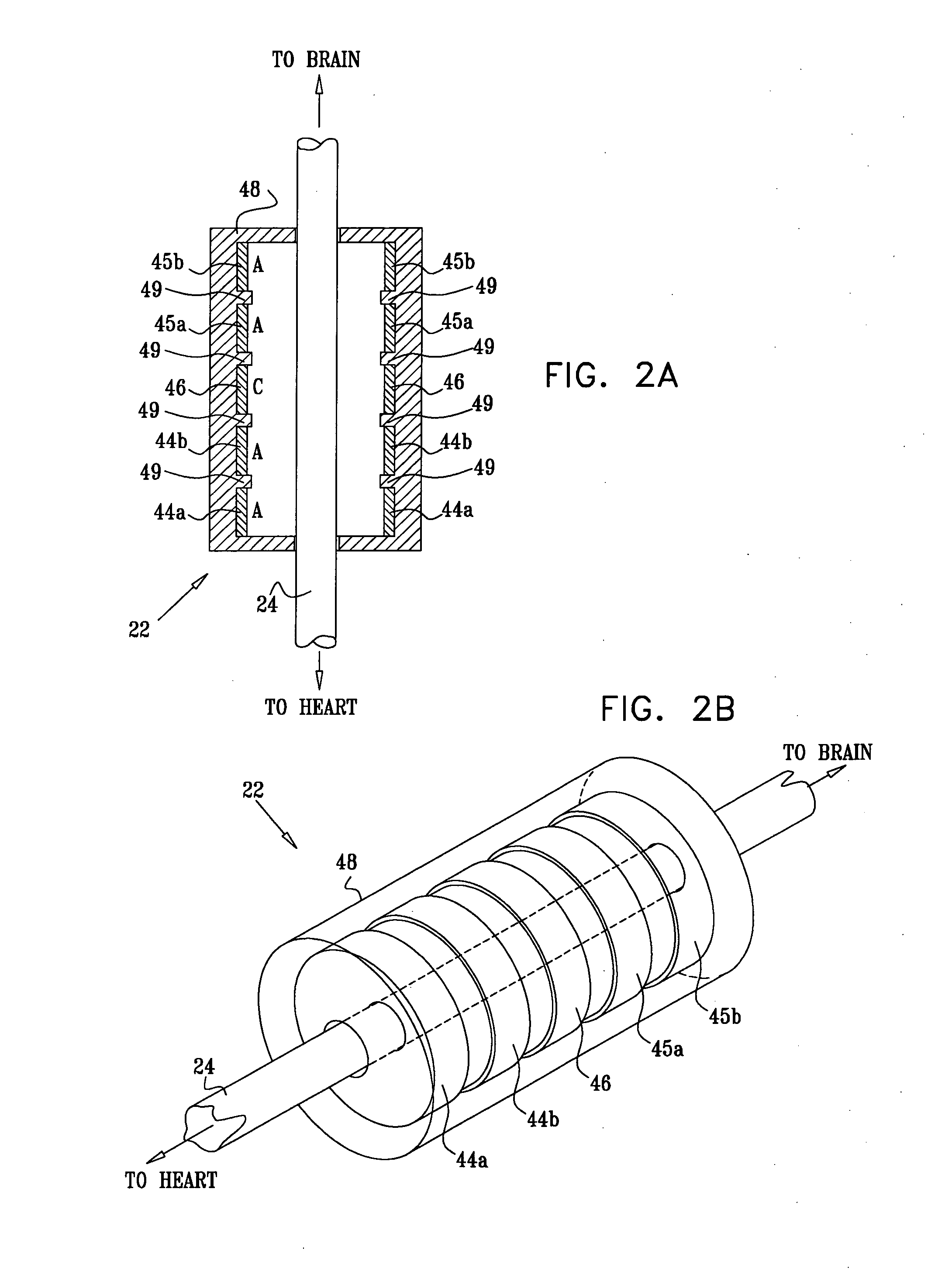Techniques for prevention of atrial fibrillation
a technology of atrial fibrillation and pulmonary artery, applied in the field of treatment of patients, can solve the problems of reduced cardiac output and/or palpitation of patients, poor force gradation, muscle fatigue and poor force gradation, etc., and achieve the effect of preventing electrical remodeling of the atrium
- Summary
- Abstract
- Description
- Claims
- Application Information
AI Technical Summary
Benefits of technology
Problems solved by technology
Method used
Image
Examples
Embodiment Construction
[0428]FIG. 1 is a schematic illustration of apparatus 20 for treating a subject 30, in accordance with an embodiment of the present invention. Apparatus 20 comprises at least one electrode device 22, which is applied to a site of the subject selected from the group consisting of: a vagus nerve 24 (either a left vagus nerve 25 or a right vagus nerve 26), which innervates a heart 28 of subject 30, an epicardial fat pad (e.g., a sinoatrial (SA) node fat pad, or an atrioventricular (AV) node fat pad), a pulmonary vein, a carotid artery, a carotid sinus, a coronary sinus, a vena cava vein, a jugular vein, an azygos vein, an innominate vein, and a subclavian vein. Alternatively or additionally, the site is selected from the group consisting of: a right ventricle, a right atrium, and other parasympathetic tissue that innervates heart 28. “Vagus nerve,” and derivatives thereof, as used in the present application including the claims, is to be understood to include portions of the left vagus...
PUM
 Login to View More
Login to View More Abstract
Description
Claims
Application Information
 Login to View More
Login to View More - R&D
- Intellectual Property
- Life Sciences
- Materials
- Tech Scout
- Unparalleled Data Quality
- Higher Quality Content
- 60% Fewer Hallucinations
Browse by: Latest US Patents, China's latest patents, Technical Efficacy Thesaurus, Application Domain, Technology Topic, Popular Technical Reports.
© 2025 PatSnap. All rights reserved.Legal|Privacy policy|Modern Slavery Act Transparency Statement|Sitemap|About US| Contact US: help@patsnap.com



